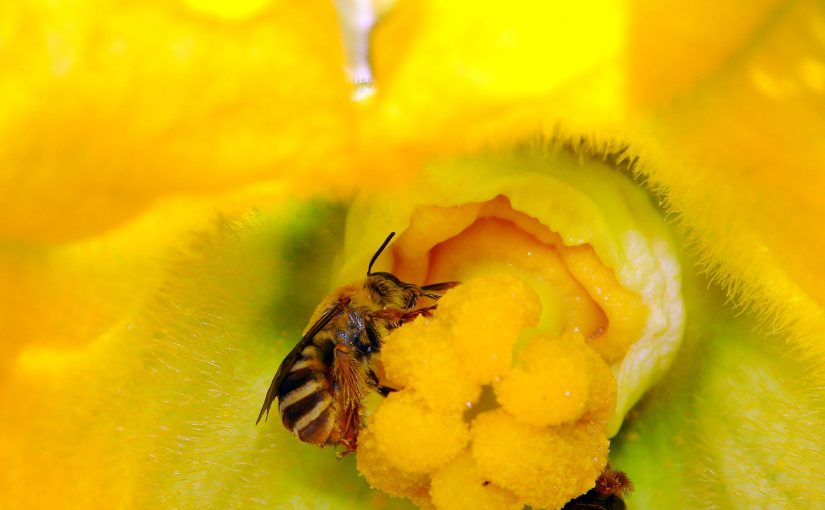In most parts of the country it is time to dust off the seed starting trays, pick out your favorite seeds, and get a little plant propagation going on. There’s definitely a lot of science (and perhaps a bit of art) to successful seed starting. While the process starts (and relies on) the imbibition of water, one of the biggest factors that affects the success, efficiency, and speed of seed germination and propagation is temperature. Germination relies on a number of chemical and physical reactions within the seed, and the speed and success of those reactions is highly temperature dependent. Respiration, where the seed breaks down stored carbohydrates for energy, is probably the most notable process involved that is temperature dependent (source). Think of it in terms of a chemical reaction you might have done back in your high school or college chemistry class – there’s an optimum temperature for the reaction and any lower and higher the reaction might slow down or not happen at all.
Thinking of it this way, seeds and germination are just like Goldilocks and her porridge – there’s too hot, too cold, and “just” right. Seeds are the same way – there’s a “just right” temperature for germination. The seeds of each species has a different optimal temperature for germination with a range of minimum and maximum temperatures for the process.
Why is important that seeds are started at their optimal temperature?
The optimal temperature is the one at which germination is the fastest. This may seem to only have consequences for impatient gardeners, but slower germination speeds increase the days to emergence for the seeds, which in turns means that the seeds and seedlings have a greater chance of failure. The early stages of germination are when seedlings are most susceptible to damping off, which can be caused by a number of fungal pathogens (Fusarium spp., Phytophthera spp., Pythium spp., etc.) that basically cause the seedling to rot at the soil level. These pathogens (as well as decomposers in some cases) can cause seeds to rot or decompose before emerging as well. That’s why you’ll sometimes see seeds that are slow to germinate (or traditionally direct sown like corn, beans, and peas) treated with those colorful fungicides. The fungicide gives the seed and seedling a little bit of protection (for a week or so, depending on the product), which is handy if you accidentally sow them before soil temperatures are optimal or if the species is slow to germinate.
If emergence is really slow, there’s also the possibility of stunting or failure due to exhaustion of the stored carbohydrates that the seed relies on until it begins photosynthesis. So the closer to the optimal temperature the seed is, the faster the emergence and the highest percentage of germination success.

What does this mean for home gardeners?
Whether you are starting seeds indoors or direct sowing outdoors, knowing the germination temps can help increase your likelihood of success. You can find a variety of resources for the optimal germination temperature for your selected crops. In general, most warm season plants, like tomatoes, peppers, and summer flowers are in the 70-80 °F range. This is why most of the warm season crops are started indoors – so temperatures can be controlled to higher levels.
For vegetable crops, here’s a good resource for basic germination temperatures. And here’s one for a few annual flowers.
Many of the cool season crops germinate at much lower temperatures, which means many of them can be directly sown early in the season rather than started indoors. Crops such as spinach, lettuce, and other leafy greens have these lower germination temps and typically perform better if germinated at lower temps.

It should be noted that this is for the soil temperature, not the air temperature. If you’re starting seeds in your home, most people don’t keep their homes in the 75 – 80 degree range in the winter. Many commercial operations use warmed tables or beds for seed starting, rather than heating the whole facility to the necessary temp – it would be expensive. For home growers, supplemental heat mats can help increase soil temp without having to heat a whole room. In a pinch, you can even clean off the top of your fridge and keep seedlings there. It is higher up in the room (heat rises) and most refrigerators create some amount of external heat as they run.
For any seeds that you’re direct sowing outdoors, whether they require higher or lower germination temperatures, you’ll have more success if you plan your sowing around soil temperatures rather than calendar dates (planting calendars can be good for estimation, though). Investing in a soil thermometer can offer detailed information on the specific temperatures in your garden soil. Or, if you have a good weather station nearby many of them have soil temperature probes that could give you a good idea of what the soil temperatures are in your region.

But don’t let the cool/warm season crop designation fool you – the Cole crops like cabbage and broccoli actually have an optimal germination temperature on the warmer side, but grow better in cooler temperatures to keep them from bolting (flowering). This is why they need to be started indoors for spring planting, but you can start them outdoors (even trying direct sowing) for fall crops – they germinate in the heat and then slow growth as the temperatures drop.





 I recently connected with Joe Lamp’l, host of the Growing a Greener World show on public television and the more recent The Joe Gardener Show podcast to talk about advanced seed starting techniques and technology.
I recently connected with Joe Lamp’l, host of the Growing a Greener World show on public television and the more recent The Joe Gardener Show podcast to talk about advanced seed starting techniques and technology.